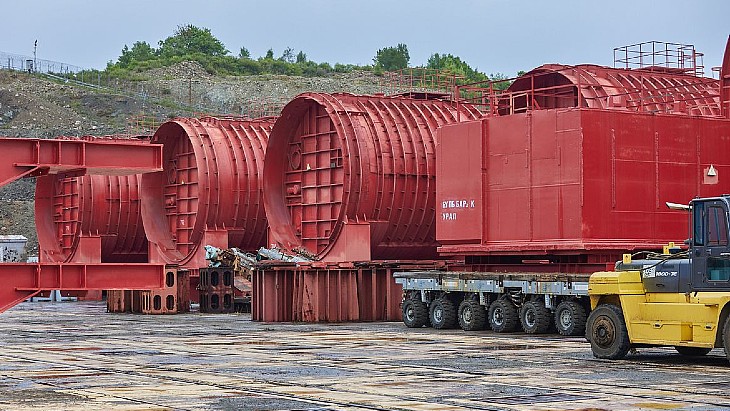Plutonium plant cleanup makes progress
 The two most highly contaminated pieces of processing equipment have been removed from the former Plutonium Finishing Plant at the US Department of Energy's (DOE) Hanford site in preparation for the plant's demolition later this year.
The two most highly contaminated pieces of processing equipment have been removed from the former Plutonium Finishing Plant at the US Department of Energy's (DOE) Hanford site in preparation for the plant's demolition later this year.The two most highly contaminated pieces of processing equipment have been removed from the former Plutonium Finishing Plant at the US Department of Energy's (DOE) Hanford site in preparation for the plant's demolition later this year.
 |
| Workers wore protective suits and breathing equipment because of airborne contamination during the cutting operation (Image: DOE Richland Operations Office) |
Work began to remove the two large glove boxes in June 2015. Nearly 4 metres in height, the glove boxes were too large and too heavily contaminated to remove from the building in one piece. The boxes were therefore cut into smaller pieces that have since been packaged for eventual permanent disposal. Workers cutting the glove boxes into pieces worked from the top down, and wore protective suits and breathed supplied air during the cutting operations.
Tom Teynor, project director for the Richland Operations Office, said the task was amongst the most hazardous work performed at any of the DOE's nuclear weapons production sites. "Removing the glove boxes brings the Department of Energy and our contractor a significant step closer to being ready to start demolishing the plant," he said.
The glove boxes were the most contaminated of the nearly 240 pieces of plutonium processing equipment at the plant that have been removed, or have been prepared to be removed, during demolition preparation. Demolition is expected to start later this year.
Hanford, in Washington state, was the site of US military plutonium production activities from 1943 until 1987. The site is now managed by the DOE's Richland Operations Office, which is responsible for the cleanup of all remaining waste streams at the site. CH2M Hill Plateau Remediation Company is the prime contractor for the environmental cleanup of Hanford's central plateau, including the Plutonium Finishing Plant.
Researched and written
by World Nuclear News
_17992.jpg)
_75800.jpg)







_66488.jpg)


